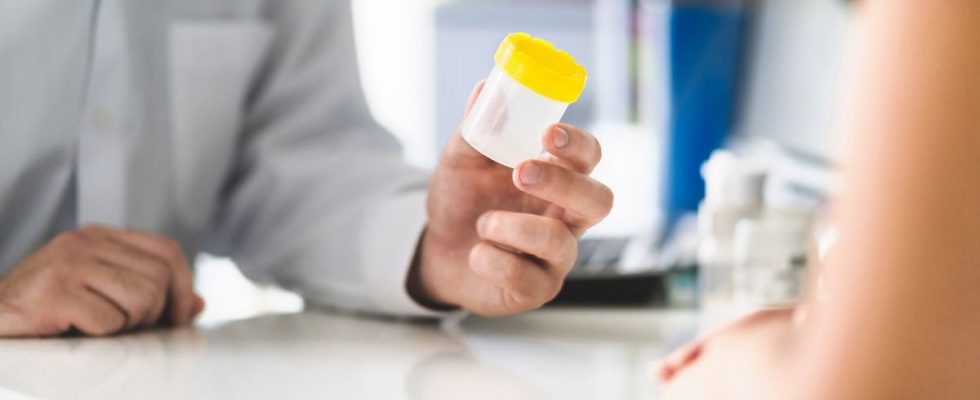Published on
Updated
Reading 2 min.
in collaboration with
Dr Yves Dour (Doctor of Pharmacy)
Since the end of last November, it has been possible to carry out cystitis screening tests, in pharmacies and without a prescription. But even today, the measure does not yet seem to have been fully adopted among pharmacists. What are the obstacles encountered? Explanations from Yves Dour, pharmacist member of the Doctissimo expert committee.
Cystitis screening has been possible since November 30 for all women aged 18 to 65, in pharmacies, without a prescription. It allows them to be diagnosed with a possible infection of this type, in order to avoid any risk of complications in pyelonephritis, which will affect the kidneys.
Screening not always easy to carry out
Subject to having followed training, the pharmacist can offer, to any patient complaining of burning and/or pain when urinating, to carry out a urine test, directly within their pharmacy. The first difficulty lies in the questionnaire. “It is quite long and very detailed” explains Yves Dour, pharmacist member of the Doctissimo expert committee. “When you’re used to it, you can finish in less than ten minutes, otherwise it can easily take double the time.”.
Subsequently, in the event of a positive result, the pharmacist can refer the patient to the appropriate treatment which will be an antibiotic, cystitis being caused by bacteria, Escherichia Coli on your mind. But second problem: only pharmacies affiliated with a Professional Territorial Health Community (CPTS) can deliver antibiotics without a prescription. For others, this is currently not possible. “This is due to the presence of delegating doctors, within the CPTS, who give a medical guarantee, which therefore does not exist for those who are not affiliated” adds the specialist.
A lack of training and suitable premises
Beyond patient care, the question of actually carrying out the tests arises. The measure was put in place recently, of course, but it seems that not all pharmacists are trained, far from it.
Another question, more practical, concerns access to toilets in the pharmacy, to carry out the test. This is a false problem, for Yves Dour. “It is entirely possible to send the patient away with a pot so that she can collect her urine at home, before taking the test strip at the pharmacy.“.
Objective of these protocols: mitigate medical deserts
Like the angina protocol, the cystitis protocol was designed to free up medical appointments in tense medical areas. “VS“It’s kind of a win-win deal.” believes Yves Dour. “We are trusted to prescribe antibiotics, after carrying out a test, we therefore gain in skills, while the doctors have appointments that become available.”.
According to the Order of Pharmacists, training should be completed so that all pharmacists can prescribe antibiotics. “This would actually make more sense, because at present, a pharmacy outside the CPTS, faced with the positive result of a urine test strip, must refer the patient to the doctor for the prescription of antibiotics. explains the expert again.
“But on the pharmacy side, we must also understand the issues and insist on the fact that antibiotics are not herbal teas, they are medications that must be dispensed with caution, so as not to generate antibiotic resistance“.
